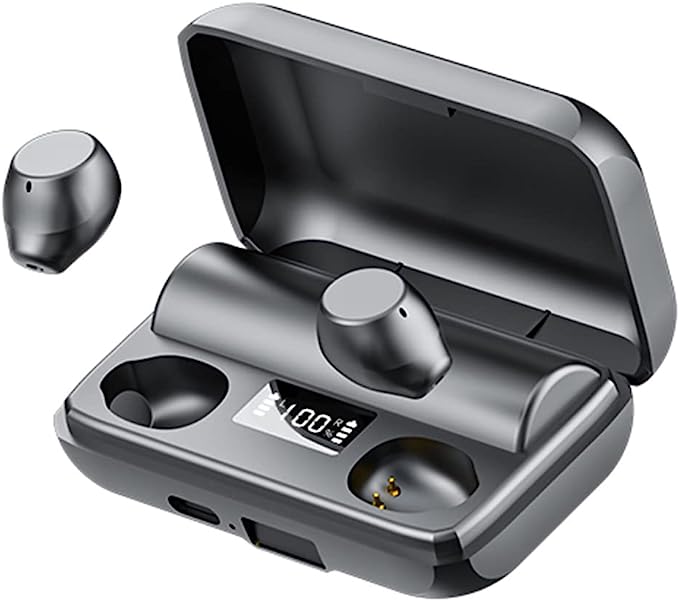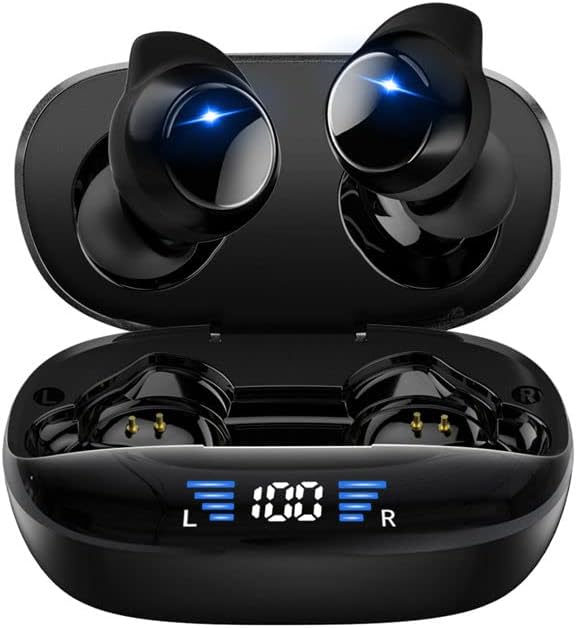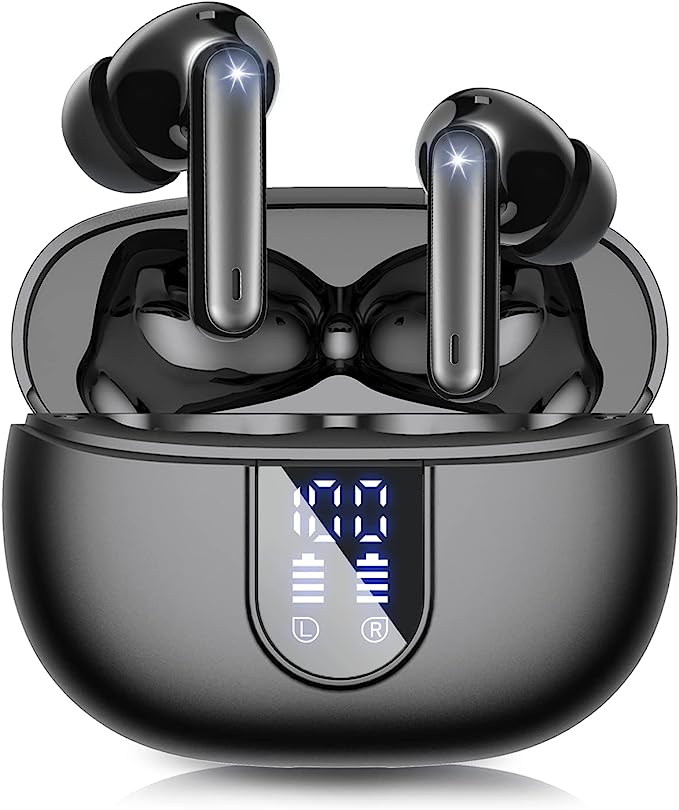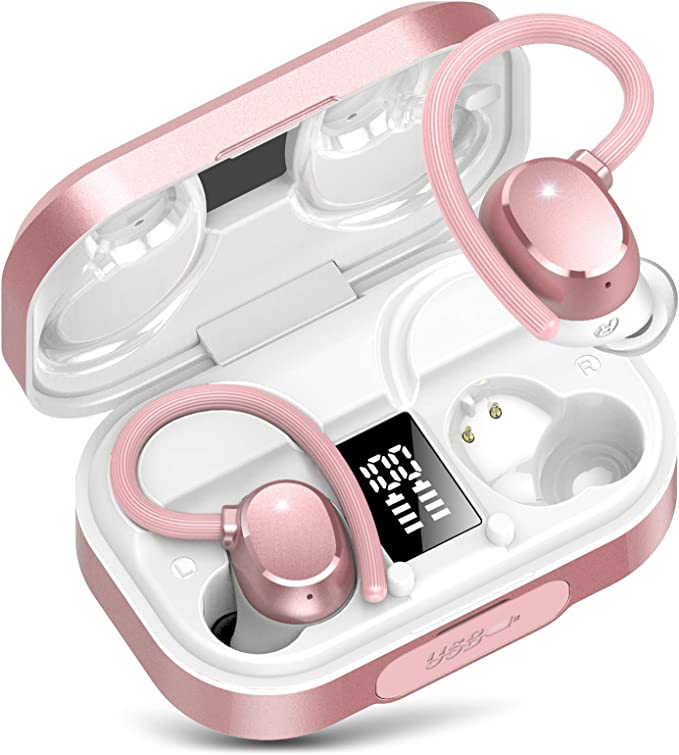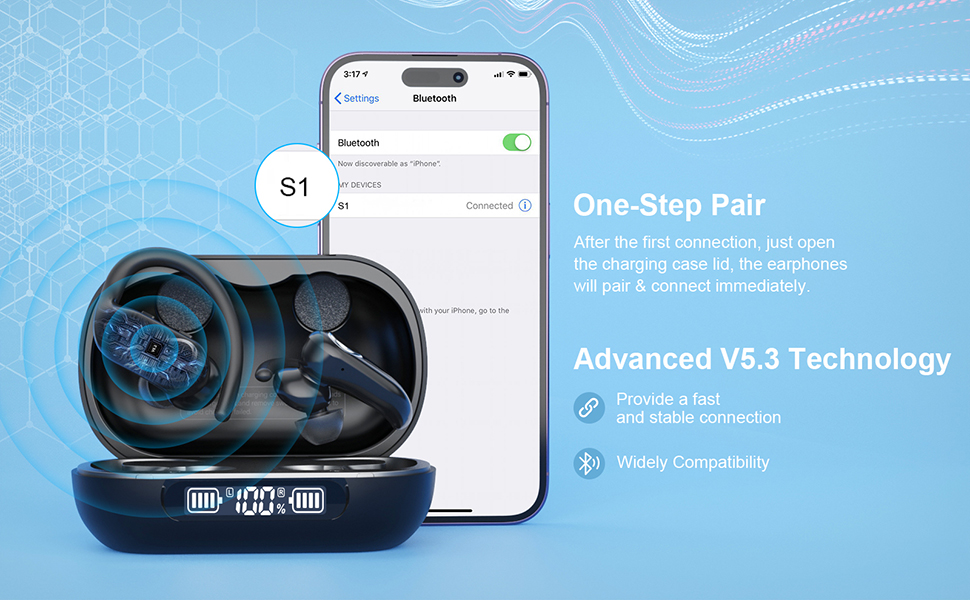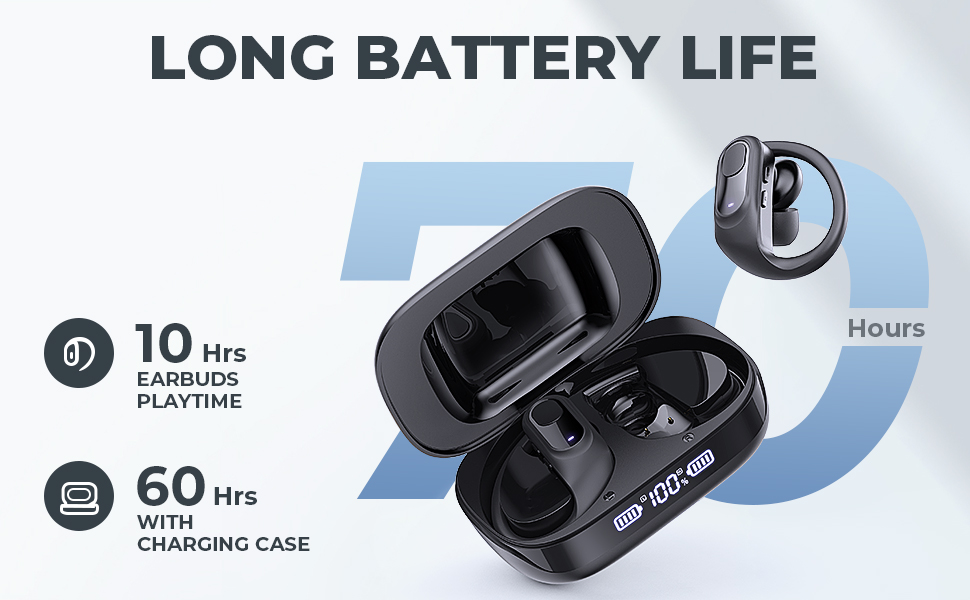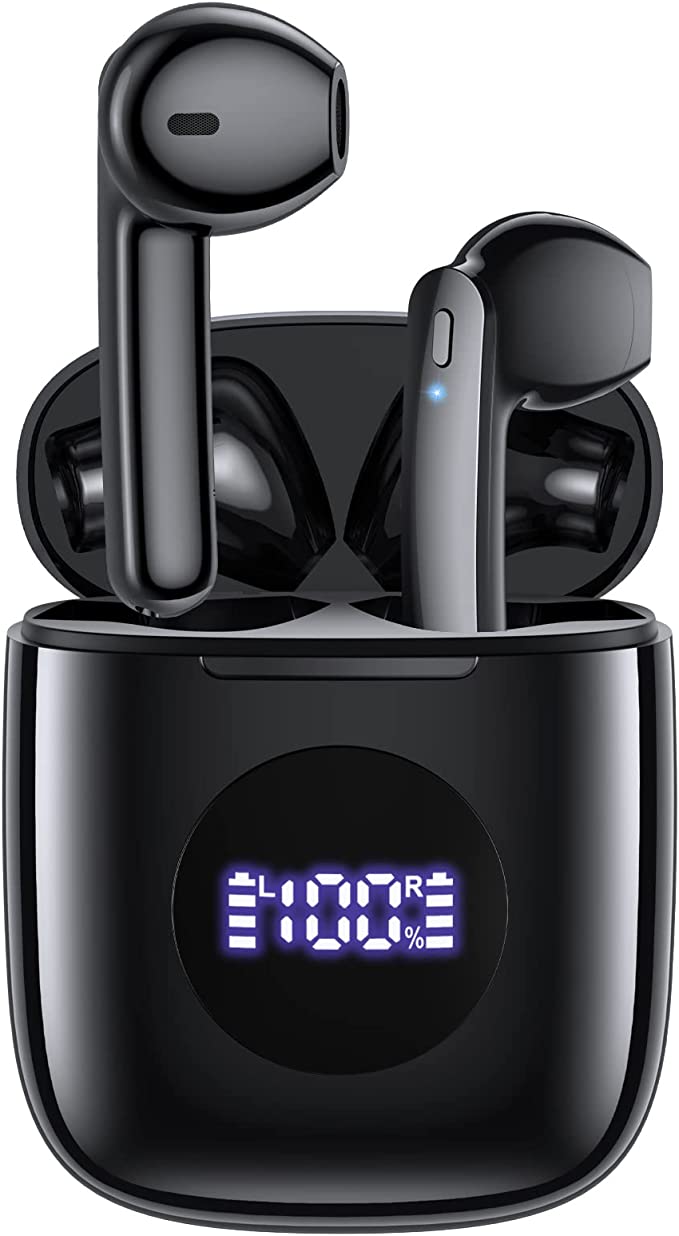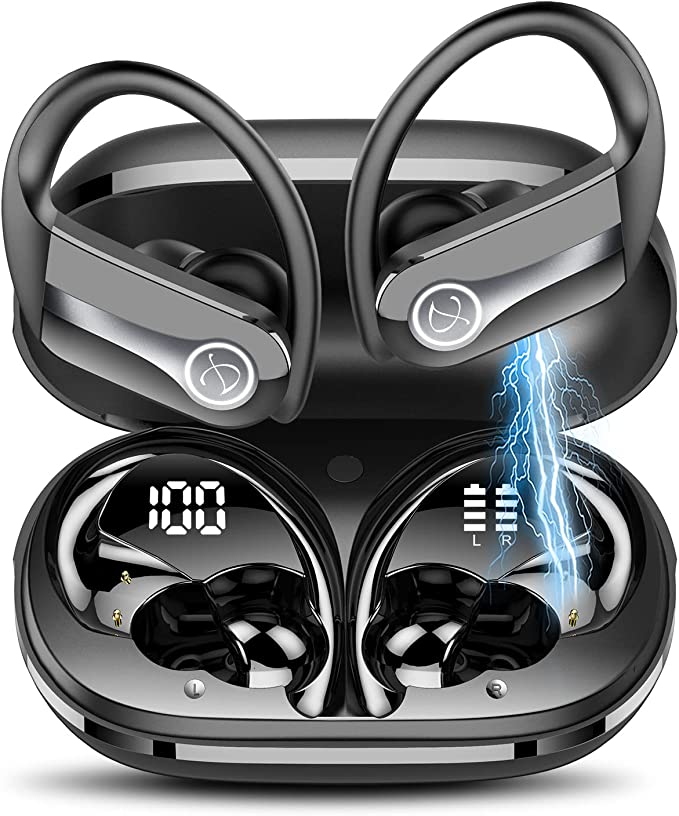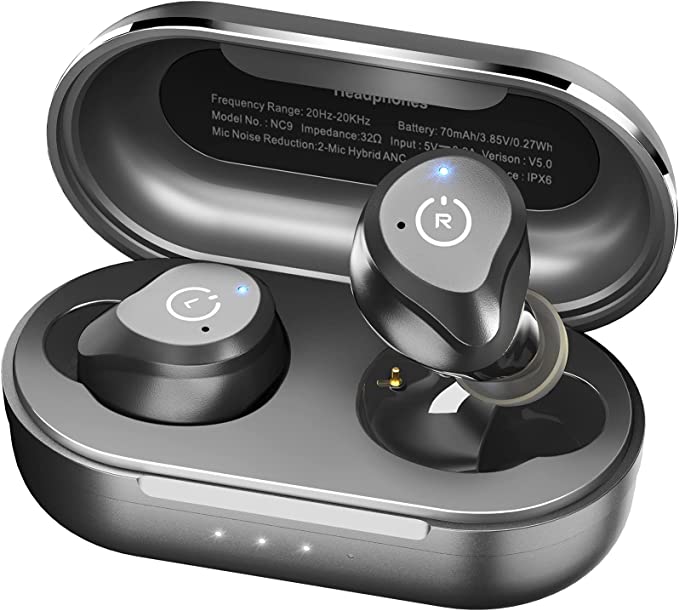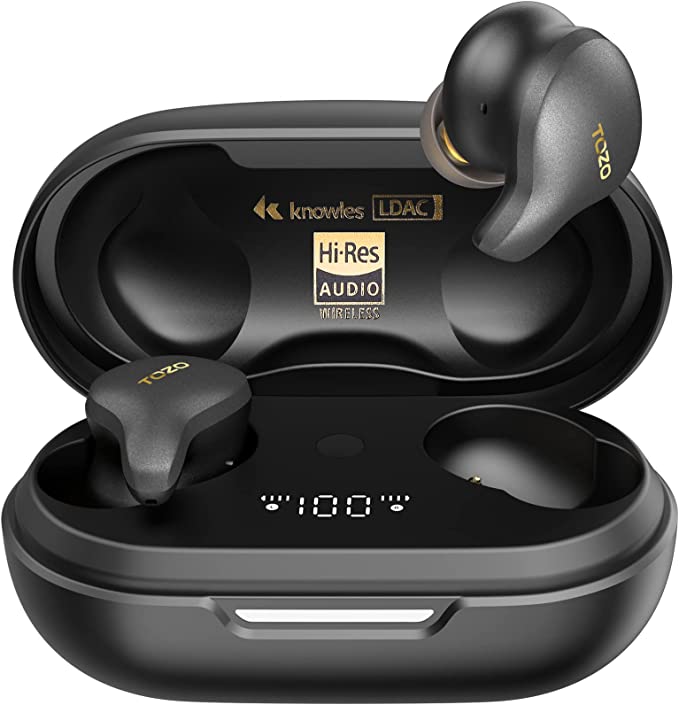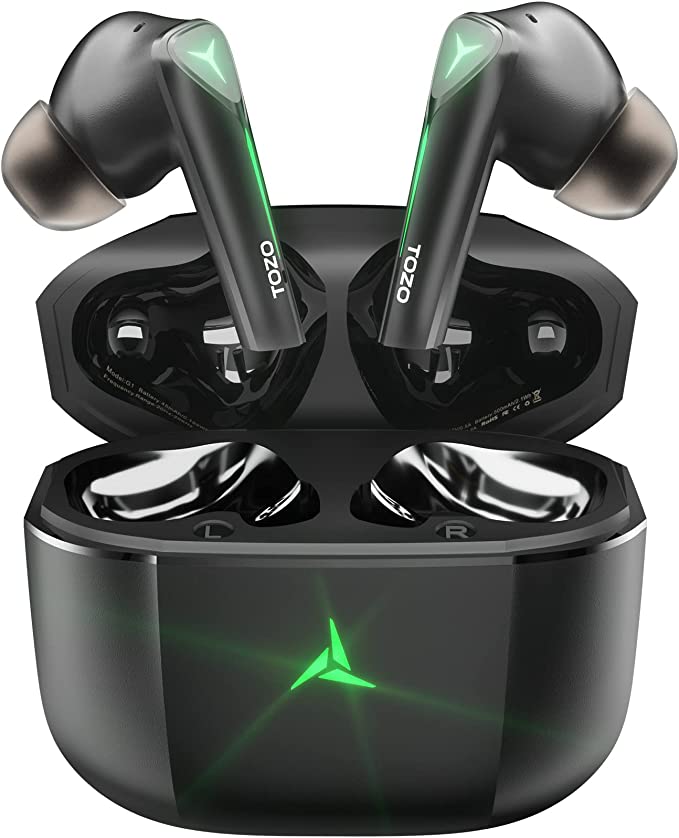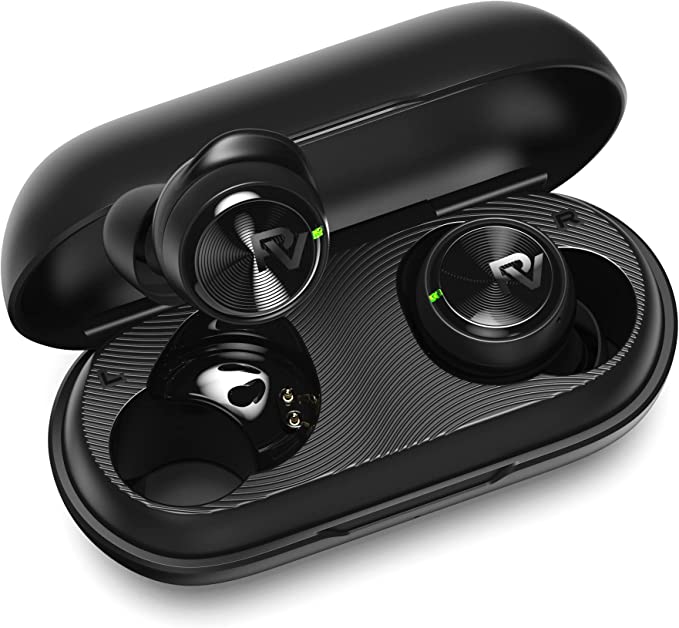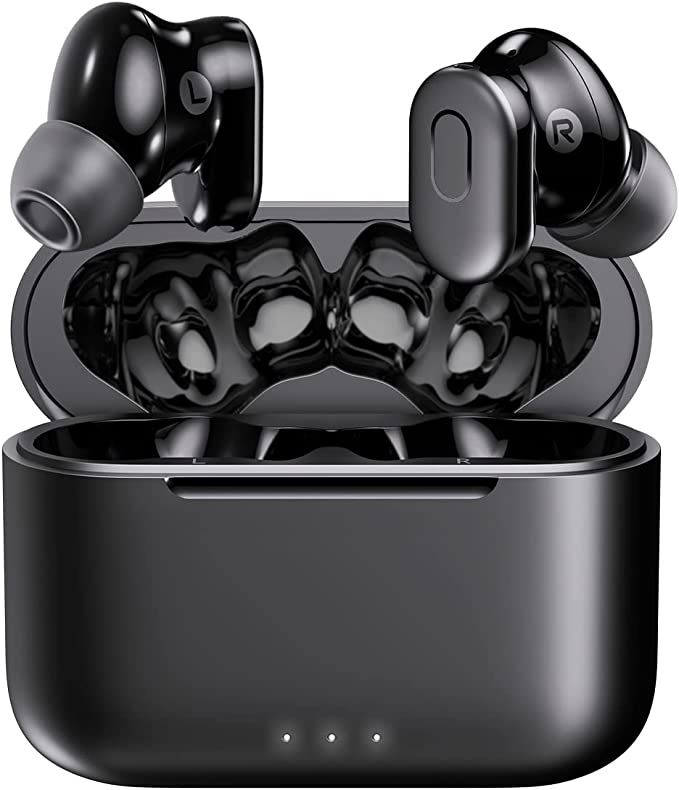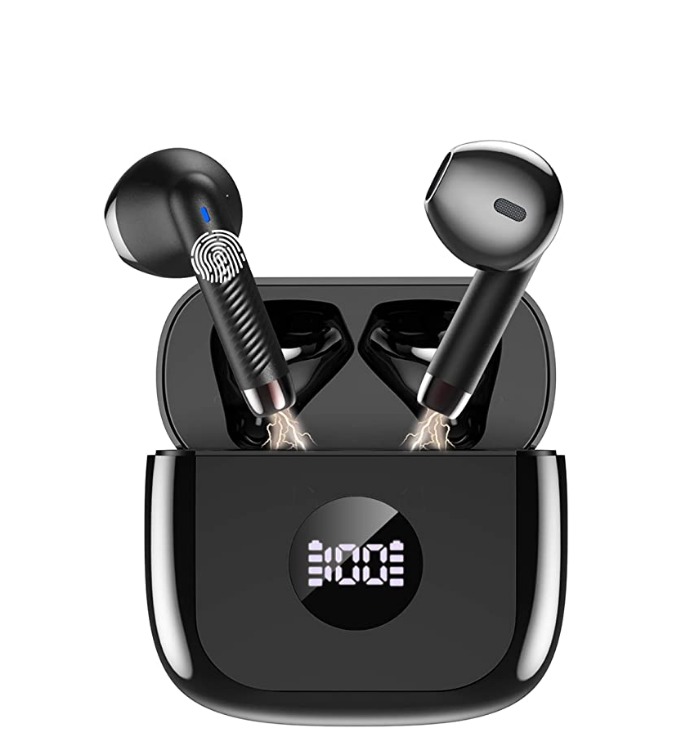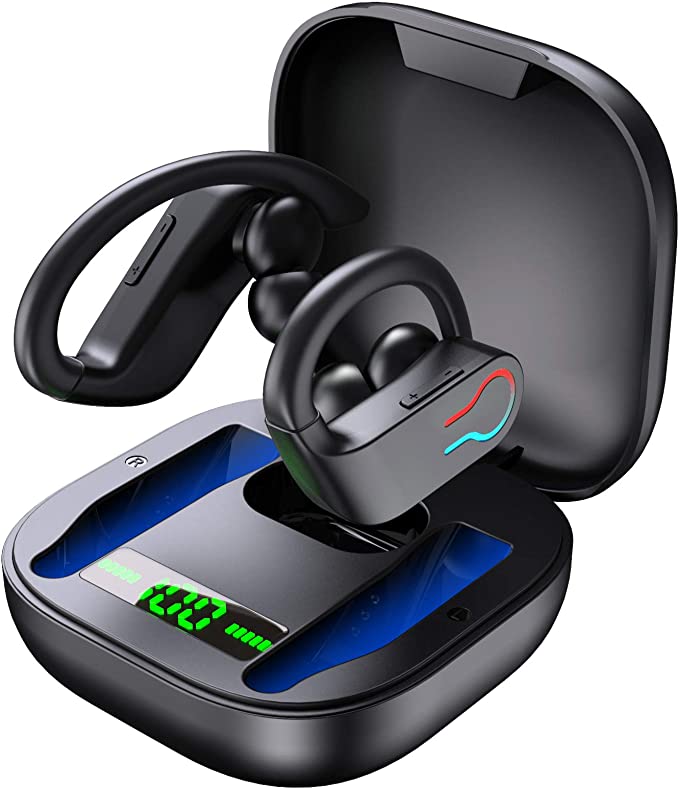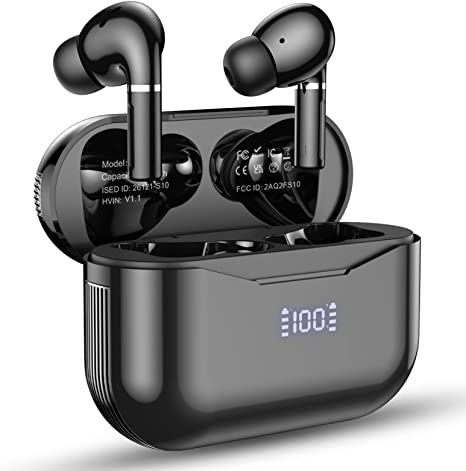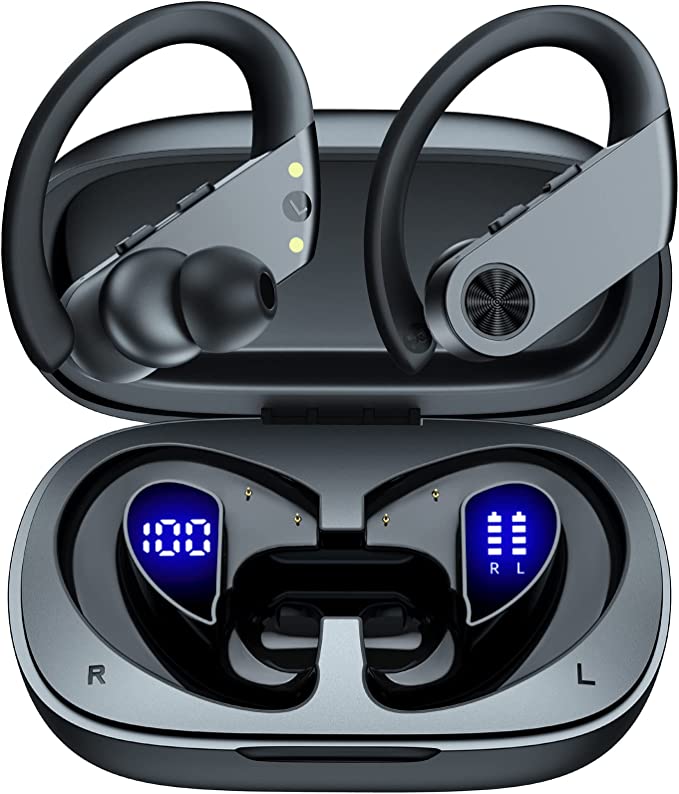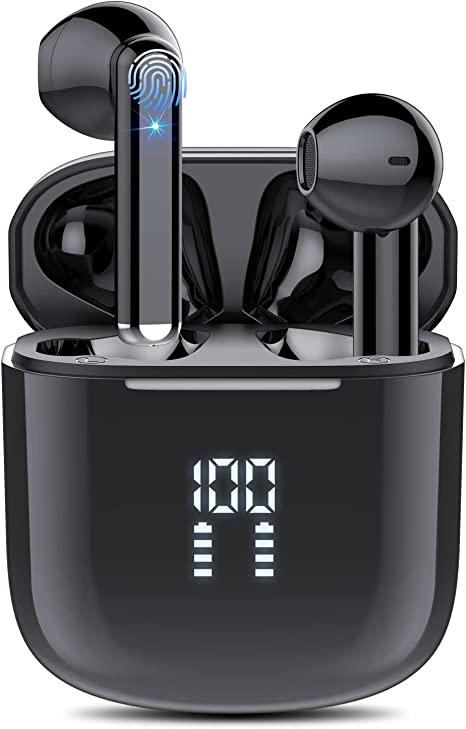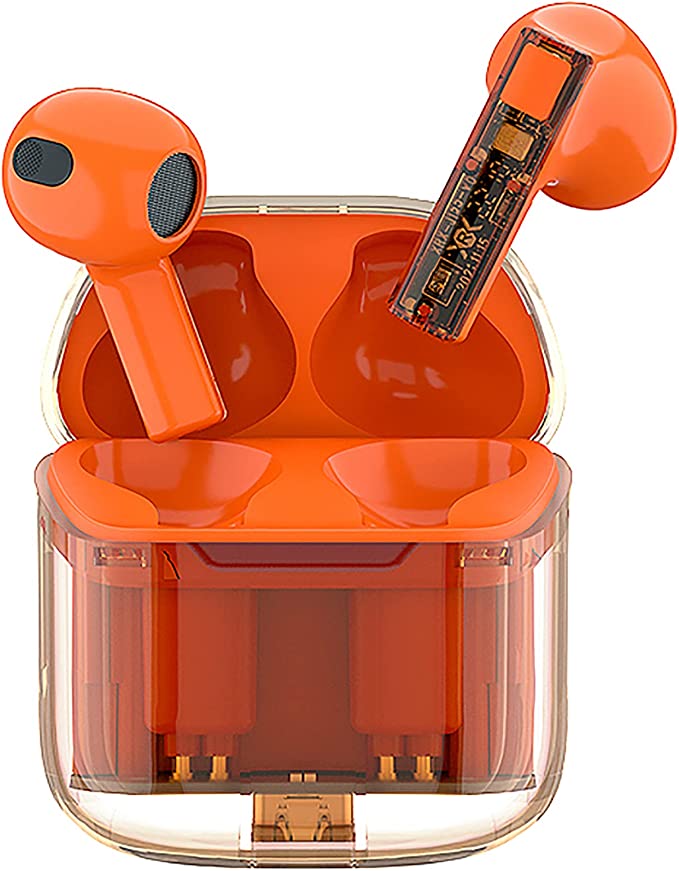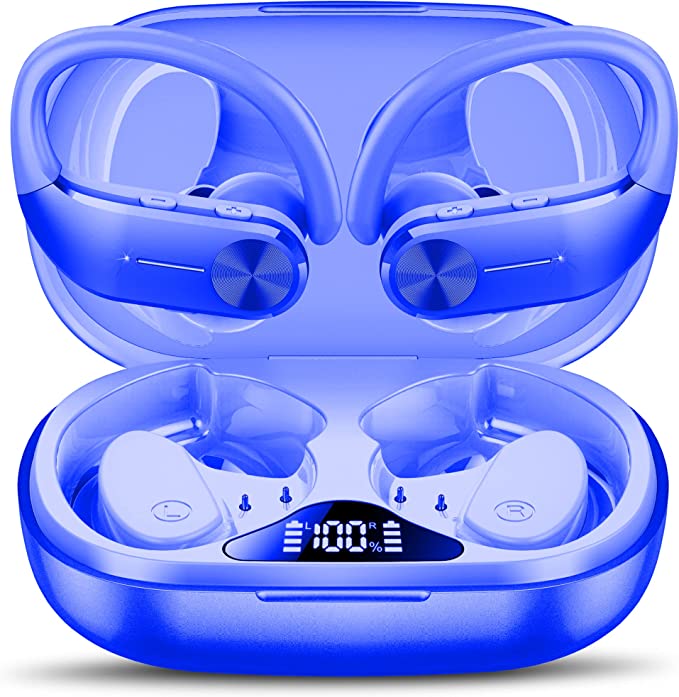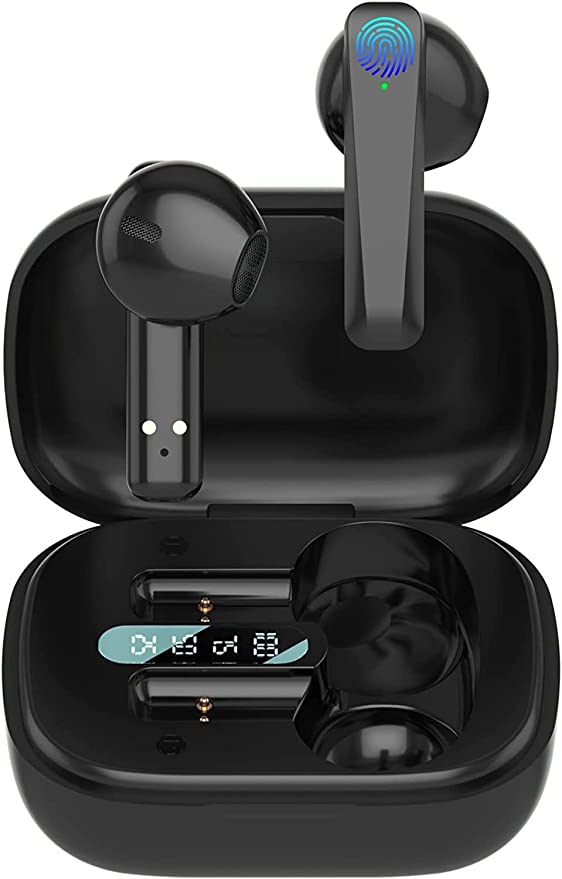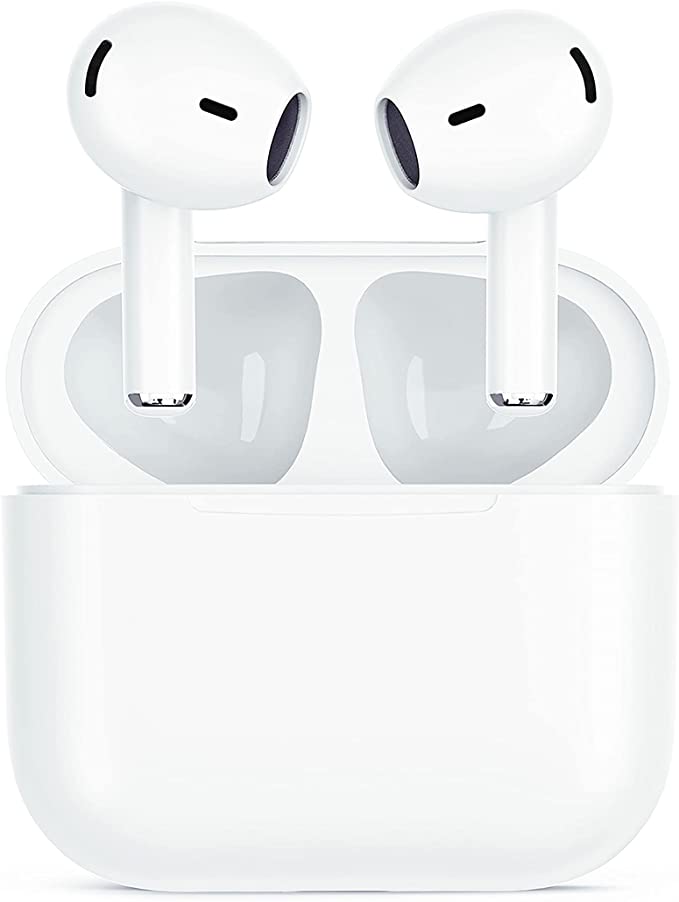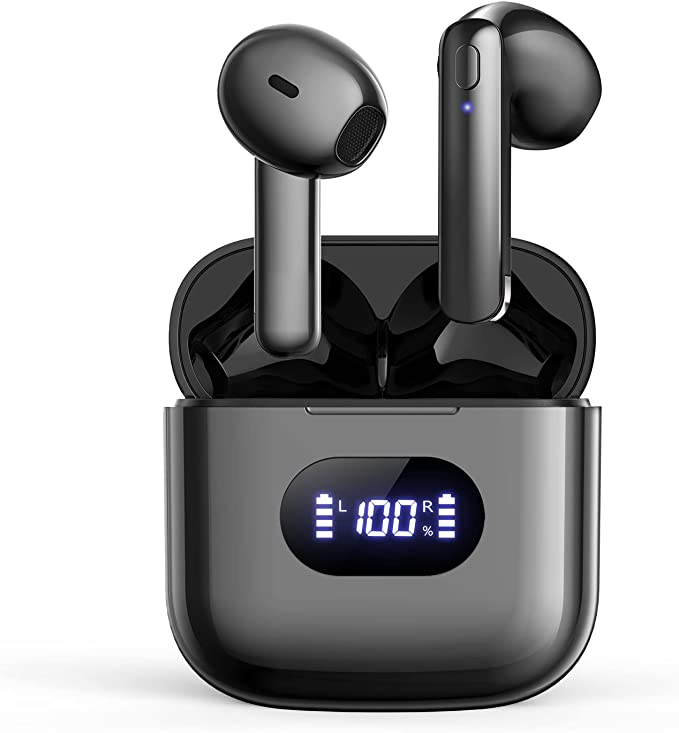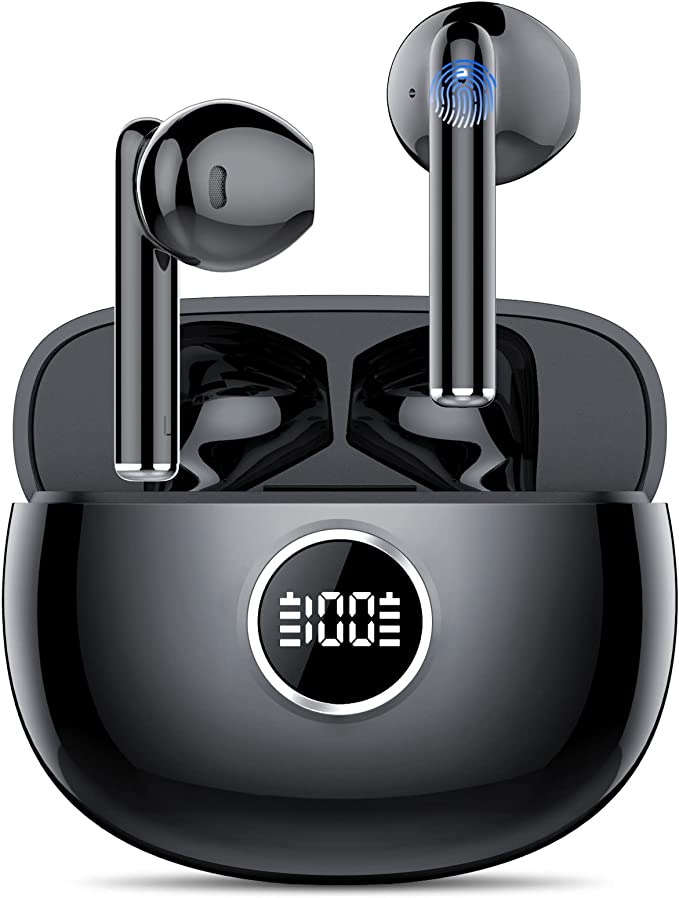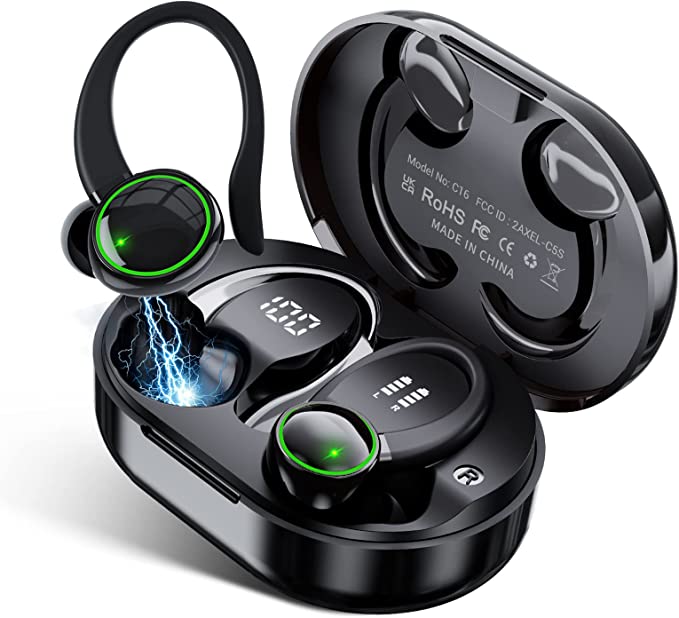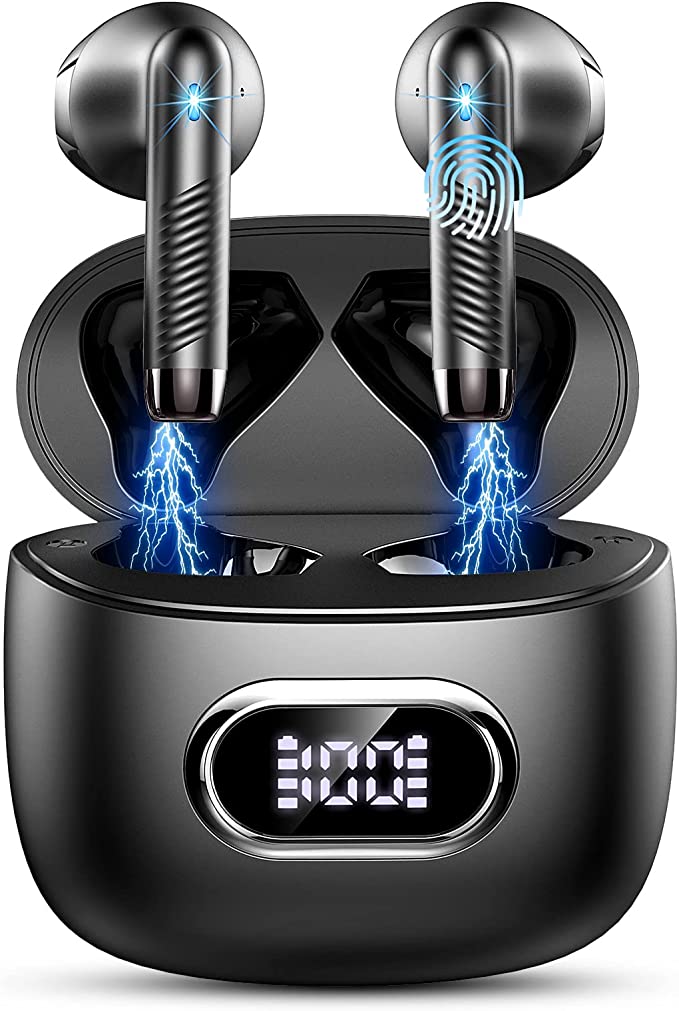Xmenha RLRBS9CSNJ Wireless Earbuds: A Deep Dive into Bluetooth 5.3 and Noise Canceling
Update on Feb. 17, 2025, 10:04 a.m.
The Soundscape of Modern Life
We live in a world saturated with sound. From the gentle hum of a refrigerator to the roar of city traffic, our ears are constantly bombarded with auditory information. While some sounds enrich our lives – a favorite song, a loved one’s voice – others are simply noise, unwanted distractions that can interfere with focus, relaxation, and even our well-being. This is where the beauty of personal audio technology, specifically wireless earbuds, comes into play. They offer a way to curate our own sonic environment, to choose what we hear and, perhaps more importantly, what we don’t hear.
A Brief History of Wireless Freedom
The quest for untethered audio experiences has a surprisingly long history. Early experiments with radio transmission in the late 19th and early 20th centuries laid the groundwork. Imagine bulky headsets, crackling with static, used primarily for military and aviation purposes. The invention of the transistor in 1947 revolutionized electronics, paving the way for smaller, more portable devices. But it wasn’t until the late 1990s that Bluetooth technology emerged, promising a truly wireless future for personal audio. The name, interestingly, comes from a 10th-century Danish king, Harald “Bluetooth” Gormsson, known for uniting warring factions – a fitting metaphor for a technology designed to connect disparate devices. Early Bluetooth versions were plagued by connection issues and limited bandwidth, but the technology has steadily evolved.

Bluetooth 5.3: The Next Generation of Wireless Audio
The Xmenha RLRBS9CSNJ earbuds are equipped with Bluetooth 5.3, the latest and most advanced iteration of this wireless communication standard. But what does that actually mean for you, the listener? Let’s break down the key advantages:
- Rock-Solid Stability: One of the most frustrating experiences with older wireless earbuds is connection dropouts. You’re enjoying your music, and suddenly – silence. Bluetooth 5.3 addresses this with significantly enhanced connection stability. It utilizes a technique called Connection Subrating, which allows devices to quickly switch between different connection channels, minimizing interference and maintaining a strong link even in crowded wireless environments, like a busy gym or a train station.
- Lightning-Fast Speed: While Bluetooth isn’t primarily about raw speed in the same way as Wi-Fi, faster data transmission is crucial for high-quality audio. Bluetooth 5.3 offers improved data transfer rates, allowing for more efficient transmission of audio data, which can translate to better sound quality, especially when using higher-quality audio codecs (more on that in a moment).

- Power Efficiency: Battery life is a constant concern with wireless devices. Bluetooth 5.3 is designed to be significantly more power-efficient than its predecessors. This is achieved through several optimizations, including improved connection management and reduced duty cycles. Essentially, the earbuds spend less time actively transmitting and receiving data when they don’t need to, conserving precious battery power. This means you can enjoy your music for longer without needing to recharge.
- LE Audio: Bluetooth 5.3 supports the new LE Audio standard. The Main Feature of LE Audio, is the new codec: LC3, which delivers better audio quality than SBC even at lower bitrates.

Decoding the Sound: Audio Codecs Explained
When you stream music wirelessly to your earbuds, the digital audio data needs to be encoded and decoded. This is where audio codecs come in. Think of them as translators, converting digital audio files into a format that can be transmitted over Bluetooth and then back into sound waves that your ears can perceive. Different codecs use different compression algorithms, and some are better than others at preserving audio quality.
- SBC (Subband Coding): This is the mandatory, default codec for all Bluetooth devices. It’s a relatively simple codec that doesn’t require much processing power, but its audio quality is generally considered to be the lowest. It’s perfectly adequate for casual listening, but audiophiles might notice a lack of detail and clarity.
- AAC (Advanced Audio Coding): This codec is widely used by Apple devices and is generally considered to be superior to SBC. It uses a more sophisticated compression algorithm that results in better sound quality at similar bitrates. If you’re an iPhone user, your earbuds will likely use AAC when connected.
- LC3(Low Complexity Communication Codec):
This is the new codec for LE Audio, and promises to be a significant step up from both SBC and AAC. It offers superior audio quality at even lower bitrates, this means it is perfect for wireless earbuds.
While the provided product information doesn’t specify which codecs the Xmenha RLRBS9CSNJ earbuds support, it’s highly likely that they support at least SBC and possibly AAC.
The Science of Silence: Active Noise Cancellation
The Xmenha RLRBS9CSNJ earbuds boast noise-canceling capabilities. This is most likely achieved through Active Noise Cancellation (ANC), a fascinating technology that uses clever physics to create a quieter listening environment. Here’s a simplified explanation:
-
External Microphones: Tiny microphones on the outside of the earbuds “listen” to the ambient noise around you – the rumble of a bus engine, the chatter of colleagues, the drone of an airplane.
-
Signal Processing: An internal processor analyzes the incoming sound waves and creates an “anti-noise” signal. This anti-noise signal is a mirror image of the original noise, 180 degrees out of phase. Imagine a wave crest meeting a wave trough – they cancel each other out.
-
Driver Output: The earbuds’ drivers then play both your audio (music, podcast, etc.) and the anti-noise signal.
-
Cancellation: When the original noise wave and the anti-noise wave meet inside your ear canal, they effectively cancel each other out, significantly reducing the perceived level of ambient noise.
It’s important to note that ANC is most effective at canceling out low-frequency, constant sounds like engine noise or the hum of an air conditioner. It’s less effective at blocking out high-frequency, sudden sounds like a baby crying or a car horn. This is because the processing takes a tiny fraction of a second, and high-frequency sounds change too quickly to be effectively canceled.

Crafting the Perfect Fit: Ergonomics and Comfort
The best sound quality in the world is useless if your earbuds are uncomfortable or constantly falling out. This is where ergonomics, the science of designing products for optimal human interaction, comes into play. The Xmenha RLRBS9CSNJ earbuds are described as “in-ear,” meaning they fit snugly within the ear canal.
The shape of the earbud housing, the angle of the nozzle (the part that goes into your ear canal), and the material and size of the ear tips all contribute to a secure and comfortable fit. Different people have different ear shapes and sizes, so it’s important to find earbuds that offer a variety of ear tip options. Silicone is a common material for ear tips because it’s soft, flexible, and provides a good seal. A good seal is crucial not only for comfort but also for maximizing sound quality and noise isolation. A poor seal allows external noise to leak in and can also negatively impact bass response.
Hearing Your Way: Frequency Response and Sound Quality
When we talk about sound quality, we’re often referring to frequency response. This is a measure of how accurately a pair of headphones or earbuds reproduces the full range of audible frequencies, from low bass to high treble. The human ear can typically hear frequencies from about 20 Hz (Hertz) to 20,000 Hz (20 kHz).
A “flat” frequency response means that the earbuds reproduce all frequencies at roughly the same level, without emphasizing or de-emphasizing any particular range. This is often considered desirable for critical listening, as it provides the most accurate representation of the original audio recording. However, many consumer headphones and earbuds have a “shaped” frequency response, often with boosted bass and treble, to create a more exciting or “fun” sound. The Xmenha RLRBS9CSNJ earbuds are advertised as having “deep bass,” which suggests that they have a frequency response that emphasizes lower frequencies.
A Day Enhanced by Sound
Let us imagine using the earbuds on our daily activities:
- Morning Commute: The noise of the train or bus fades away, allowing you to enjoy your favorite podcast or audiobook in peace. The stable Bluetooth 5.3 connection ensures uninterrupted listening, even in crowded areas.
- Workout Session: The secure fit of the earbuds keeps them firmly in place, even during intense exercise. The deep bass provides an extra boost of motivation.
- Office Focus: The noise-canceling feature helps to block out distractions, allowing you to concentrate on your work.
- Evening Relaxation: Wind down with your favorite music, enjoying the rich sound quality and comfortable fit.
Listening Responsibly: Hearing Health and Wireless Earbuds
While modern earbuds offer great sound and convenience, they can be dangerous to hearing health.
It’s crucial to be mindful of volume levels and listening duration. Prolonged exposure to loud sounds can cause permanent hearing damage. A good rule of thumb is the 60/60 rule: listen at no more than 60% of the maximum volume for no more than 60 minutes at a time.
Conclusion: The Future of Sound is Wireless
The Xmenha RLRBS9CSNJ wireless earbuds, represent a significant step in the evolution of personal audio. The earbuds offer a good value, given the features they provide. They empower users to create their own personalized soundscapes, enhancing focus, productivity, and enjoyment.
